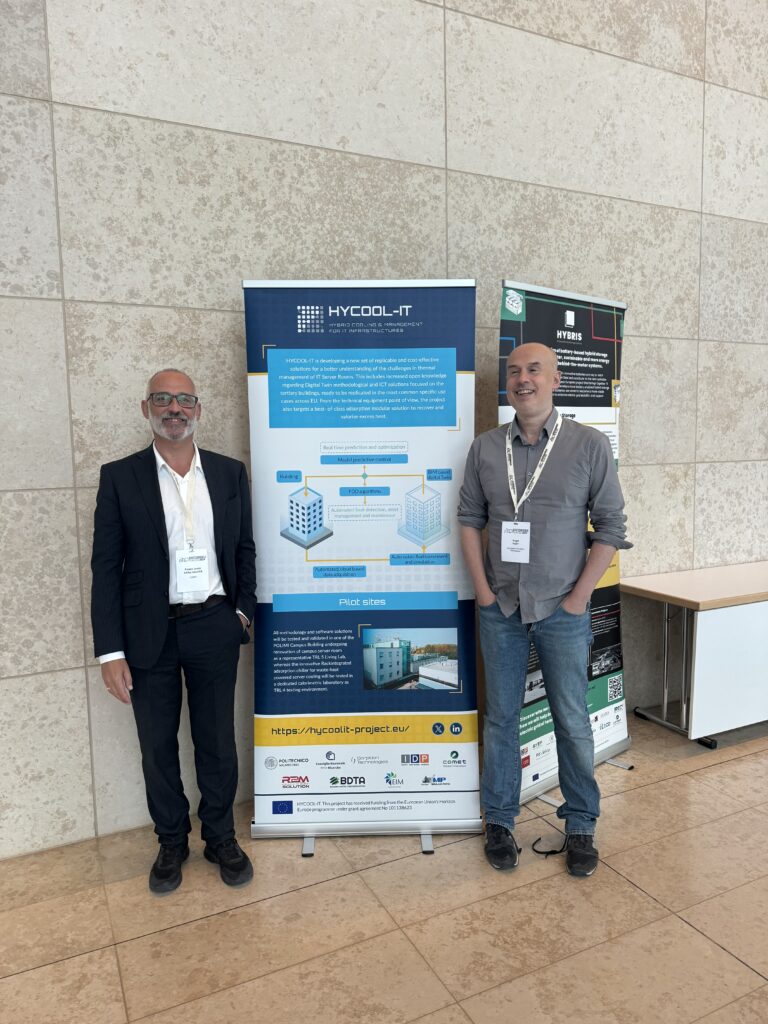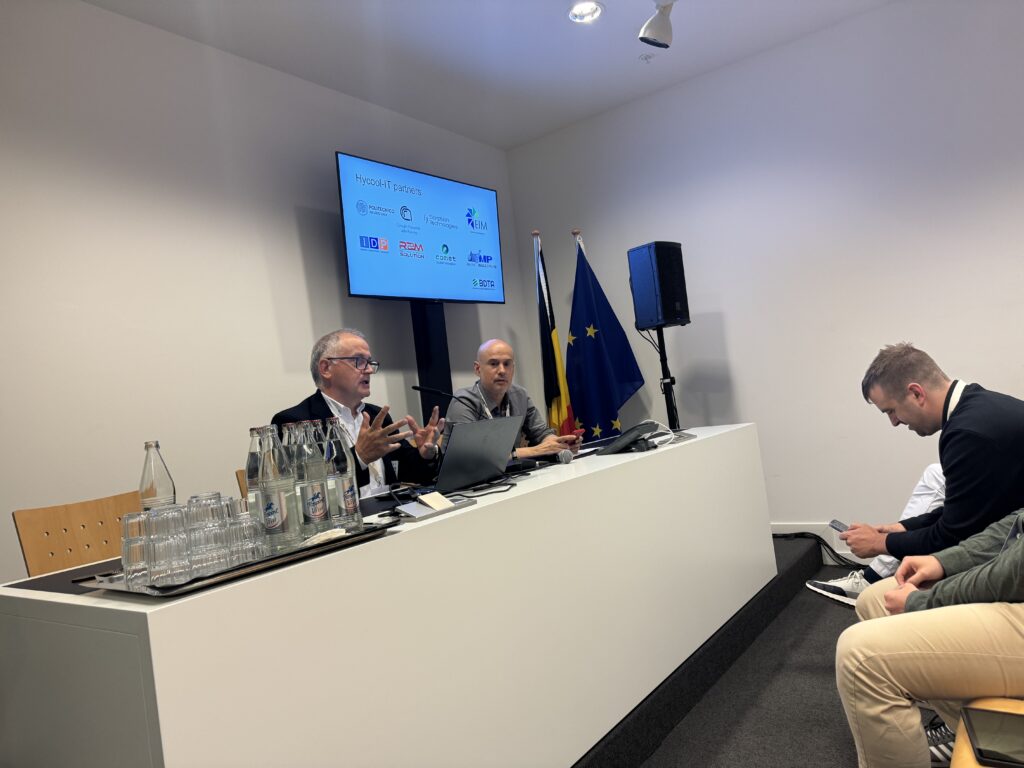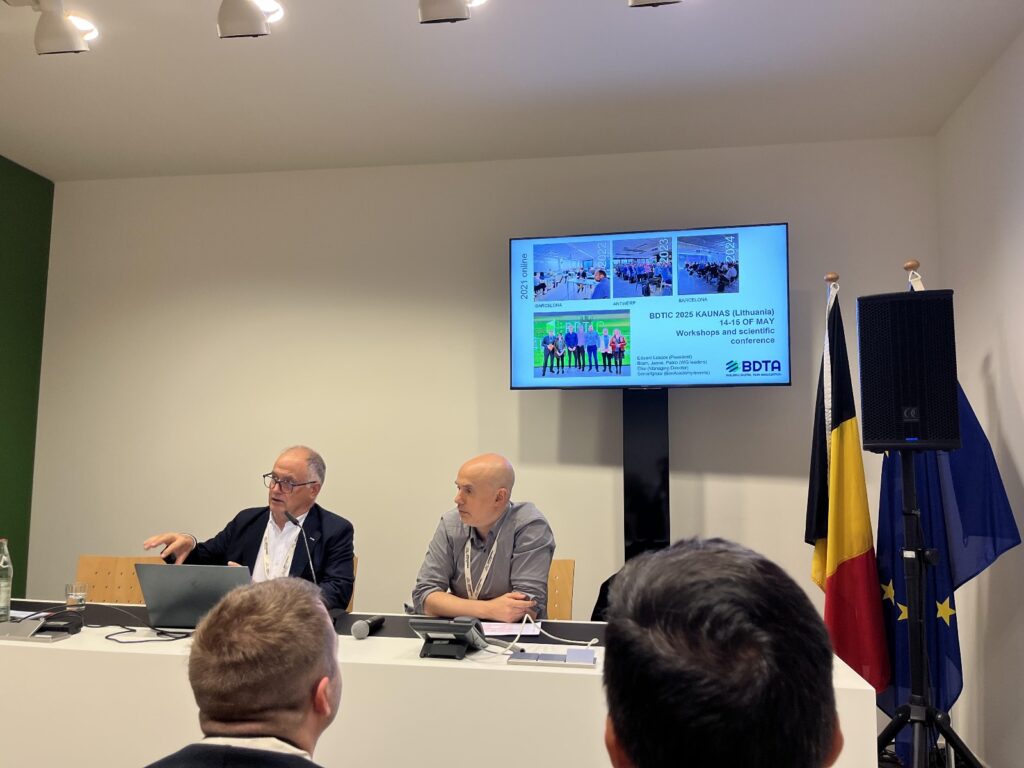Hycool_IT participated for the first time in the Sustainable Places 2024 conference that was held in Luxembourg between 23 and 25 September. In a workshop titled ‘From energy simulations to standards‘, Hycool_IT joined forces with other EU-funded projects for the 12th annual edition of the event, these other contributors were HyperGryd, Hystore, Hybris, Senergy Nets, Dyman, Hycool-it and the BDTA.
Pablo Vicente Legazpi , from BDTA represented Hycool_IT and contributed to the workshop with our project’s objectives. He presented the scope of the simulation for Hycool_IT that was to be performed in data centres over In-row cooling, chillers, emergency generator, data centre room, racks, UPS, batteries, power building and auxiliary services (waste heat). The tools used for the simulation are BIM models (several tools), DYMOLA, ECOSIMPRO and SIMULATIONX .
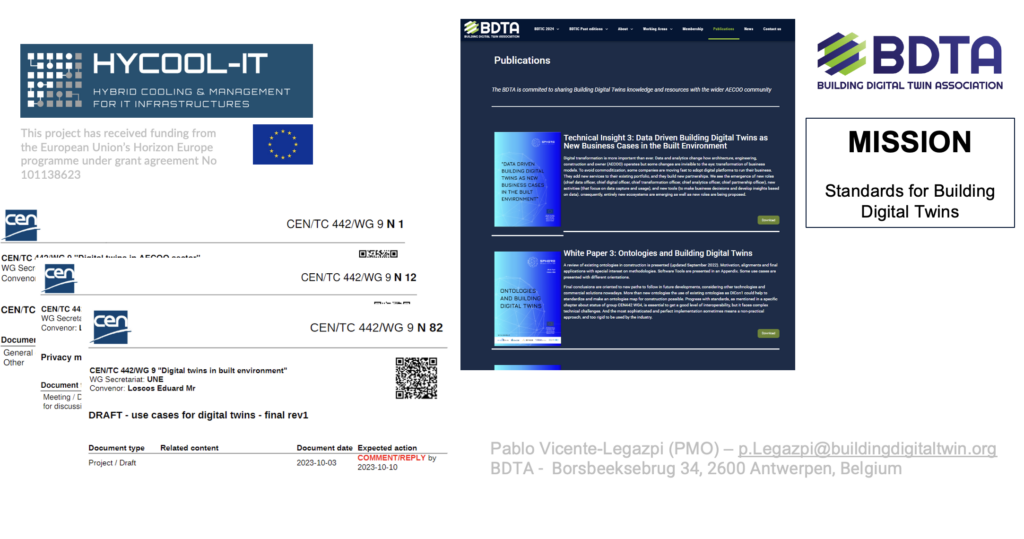

The software and time frame aims at an integration in less tan 30 seconds and there is a monitoring 5 minutes register and communication system (SMTS, Simulation Monitoring and tracking System as well). It can benefit from other simulations by up-stream standardization: SIMBOTs, fluids, mathematical equations (not co-simulation (FMU) and not input/output (OPCUA)). The system can help also in promoting the need of consensus among developers, manufacturers. It can also benefit from up-stream integration with power supply (PV, clean energies). And also for down-stream by managing waste heat for buildings.
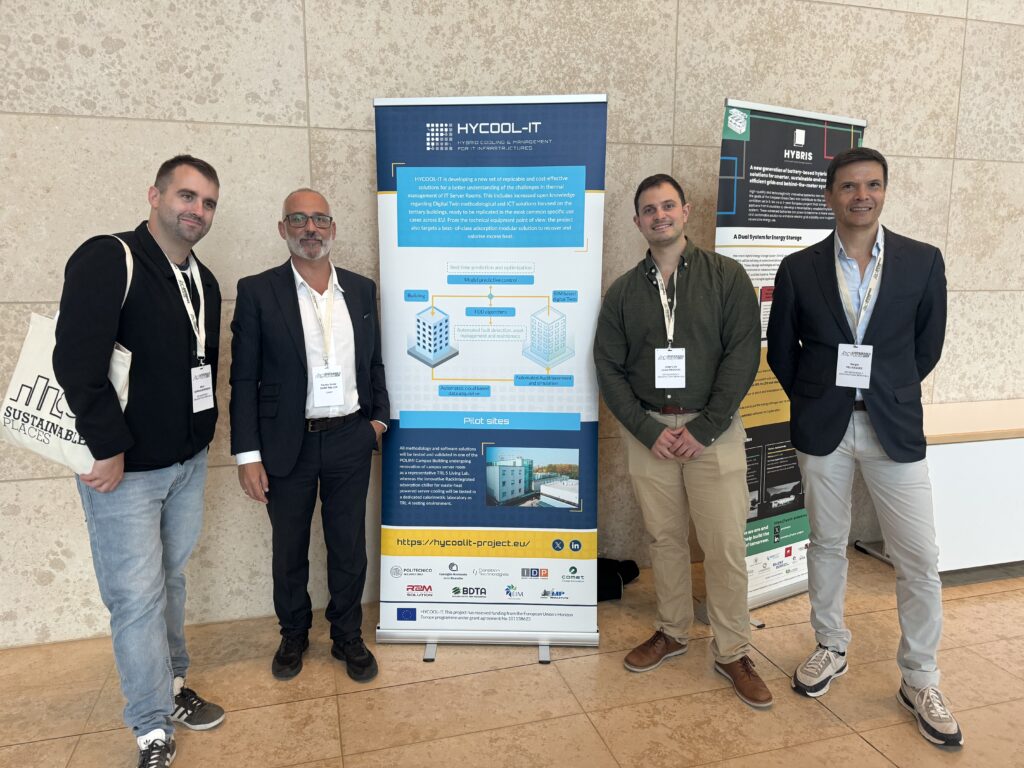
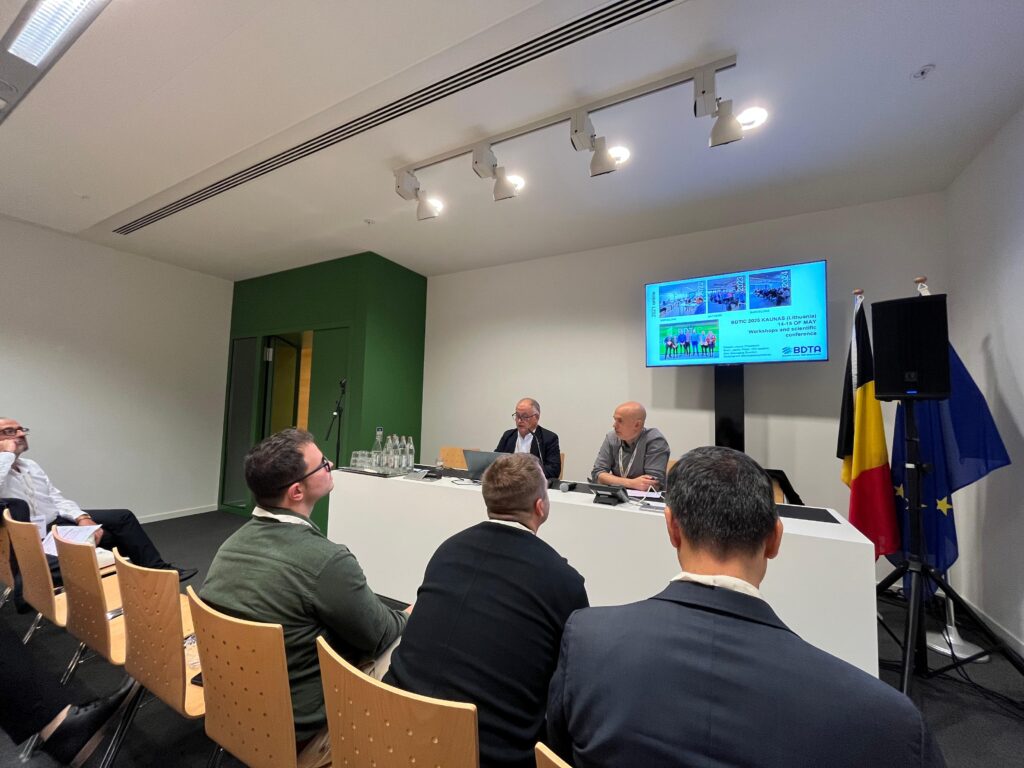
The workshop took place on Tuesday 24 September at 14:00-17:30 and was broadcast from Luxembourg in a hybrid format.
Complex installations use mathematical simulation to test the integration and dynamics of energy simulations. Electrical generators, protections, and consumers allow many configurations, and the only reliable way to solve that complexity is to reduce it into pieces.
In many EU projects, mathematical simulation is used to model dynamic response and integration of systems. However, components, ports or just mathematical functions used are not standardized. They are based on legacy systems, or the libraries developed are not totally compatible or not well documented. That produced non-interoperable scenarios and silos of knowledge.
The workshop was moderated by Angel Font and tried to identify the functional applications of these simulations and the starting point of a potential standardization. That conceptual standard could make possible reusable components, real-time use, or just connections between systems.
